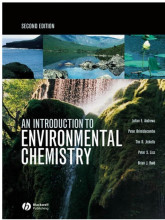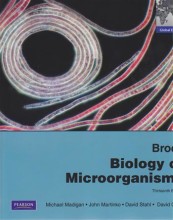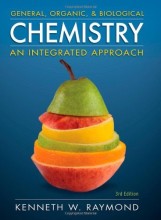Samenvatting: An Introduction To Environmental Chemistry | Julian E Andrews, et al
- Deze + 400k samenvattingen
- Een unieke studie- en oefentool
- Nooit meer iets twee keer studeren
- Haal de cijfers waar je op hoopt
- 100% zeker alles onthouden
Lees hier de samenvatting en de meest belangrijke oefenvragen van An Introduction to Environmental Chemistry | Julian E. Andrews; Peter Brimblecombe; Tim D. Jickells; Peter S. Liss; Brian Reid
-
1 Introduction
Dit is een preview. Er zijn 1 andere flashcards beschikbaar voor hoofdstuk 1
Laat hier meer flashcards zien -
1.1 What is environmental chemistry?
Dit is een preview. Er zijn 18 andere flashcards beschikbaar voor hoofdstuk 1.1
Laat hier meer flashcards zien -
Wat is de Nederlandse vertaling van environmental Chemistry?
Milieuchemie -
Geef een korte omschrijving van milieuchemie (definitie)
Milieuchemie is de studie van chemische omzettingen in het milieu -
Om welke 2 dingen gaat het bij milieuchemie?
- de chemie van natuurlijke processen
- de chemie van processen die leiden tot gehalten van verontreinigende stoffen in het milieu en de menselijke invloed daarop
-
Uit welke 3 bestanddelen bestaat de nabije aarde?
Het aardoppervlak bestaat uit:- korst
- oceanen
- atmosfeer
-
Uit welke 3 componenten bestaat een atoom?
een atoom bestaat uit:- protonen
- neutronen
- electronen
-
Wanneer zijn isotopen stabiel?
Als het aantal protonen (Z) en neutronen (N) bijna gelijk zijn (dus met 1 a 2 verschillen). -
Wat gebeurt er bij een groter verschil in aantal protonen (Z) en neutronen (N)?
De isotopen worden onstabiel en vallen uiteen door radioactief verval in een meer stabiel isotoop. Hierbij komt warmte vrij. -
1.2 In the beginning
Dit is een preview. Er zijn 9 andere flashcards beschikbaar voor hoofdstuk 1.2
Laat hier meer flashcards zien -
Wat gebeurde er in de eerste fractie van een seconde na de Big Bang?
de hoeveelheid stof en straling werd vastgelegd in een verhouding van 1 : 108. -
Wat gebeurde er in de eerste minuten na de Big Bang?
de relatieve hoeveelheid waterstof (H), deuterium (D) en helium (He) werden vastgesteld. zwaardere elementen werden gevormd in sterren. Elementen zo zwaar als ijzer kunnen in de kern van sterren gevormd worden. Eindige sterren die een explosieve supernova vormen produceren de nog zwaardere elementen. -
Wat heeft er voor gezorgd dat we zoveel verschillende elementen kennen?
het stellaire productieproces.
- Hogere cijfers + sneller leren
- Niets twee keer studeren
- 100% zeker alles onthouden
Onderwerpen gerelateerd aan Samenvatting: An Introduction To Environmental Chemistry
-
Introduction - In the beginning
-
Introduction - Origin and evolution of the Earth - Formation of the crust and atmosphere
-
Introduction - Origin and evolution of the Earth - The hydrosphere
-
Introduction - Human effects on biogeochemical cycles?
-
The atmosphere - Composition of the atmosphere
-
The atmosphere - Natural sources - Geochemical sources
-
The atmosphere - Reactivity of trace substances in the atmosphere
-
The atmosphere - The urban atmosphere
-
The atmosphere - Effects of air pollution
-
The atmosphere - Removal processes
-
The atmosphere - Chemistry of the stratosphere
-
The chemistry of continental solids - The terrestrial environment, crust and material cycling
-
The chemistry of continental solids - The structure of silicate minerals - Structural organization in silicate minerals
-
The chemistry of continental solids - Mechanisms of chemical weathering
-
The chemistry of continental solids - Clay minerals
-
The chemistry of continental solids - Formation of soils
-
The chemistry of continental solids - Soil structure and classification
-
The chemistry of continental solids - Contaminated land
-
The chemistry of continental waters - Element chemistry
-
The chemistry of continental waters - Aluminium solubility and acidity
-
The chemistry of continental waters - Biological processes - Nutrients and eutrophication
-
The chemistry of continental waters - Heavy metal contamination
-
The chemistry of continental waters - Contamination of groundwater
-
The oceans - Estuarine processes
-
The oceans - Chemical cycling of major ions
-
The oceans - Minor chemical components in seawater
-
Global change - The carbon cycle - Natural and anthropogenic sources and sinks
-
Global change - The sulphur cycle





























